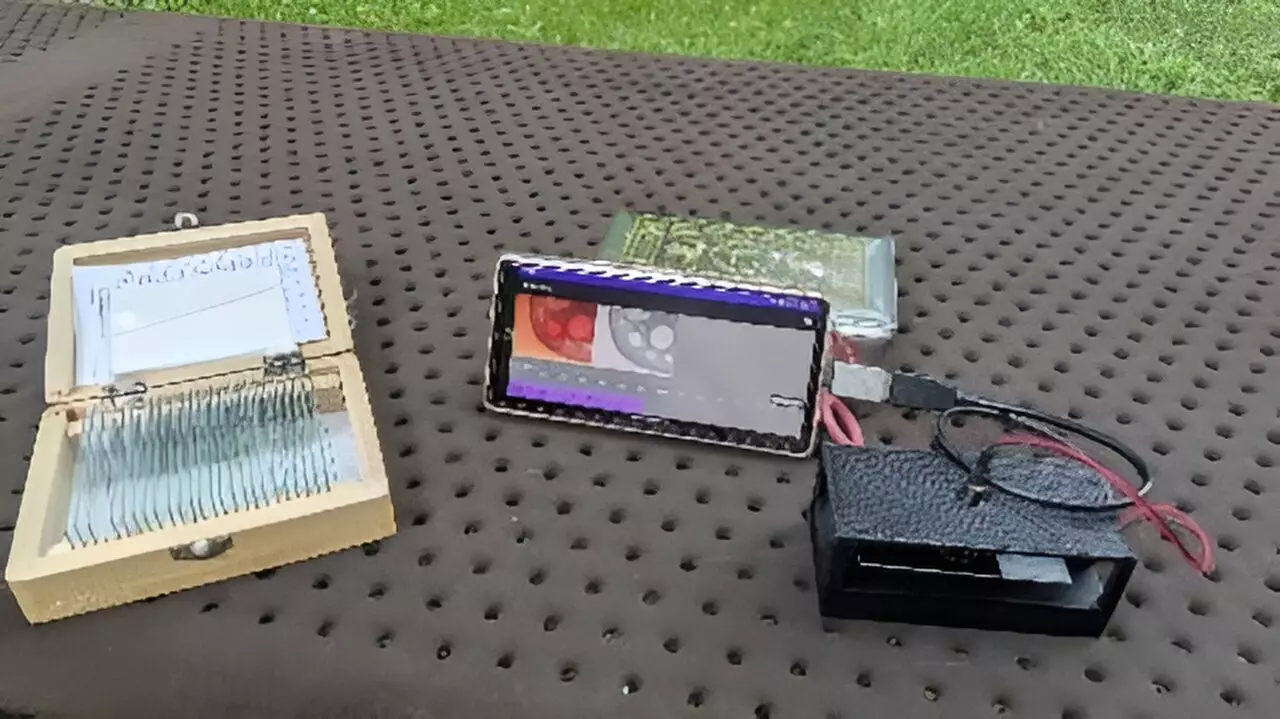Advancements in technology continuously reshape our understanding and interaction with the world. One of the latest breakthroughs is the smartphone-based digital holographic microscope, an innovation set to revolutionize various fields—most notably healthcare and education. This microscope stands out because of its affordability and portability, which allow for real-time 3D measurements that were previously confined to bulky, expensive equipment situated in labs. Imagine being able to conduct detailed analyses of biological samples anywhere from a classroom to a remote clinic—this is the transformative promise of the new smartphone-enabled device.
Breaking Down Barriers in Medical Diagnostics
The capabilities of this new microscope are especially significant for low-resource settings. In many developing countries, access to advanced medical diagnostic tools is limited, leading to delays in treatment and misdiagnoses. Yuki Nagahama, the research team leader from the Tokyo University of Agriculture and Technology, emphasizes that the device could dramatically change that landscape. For instance, its capacity to diagnose conditions like sickle cell disease on-site can enable healthcare providers to deliver timely interventions, thus ultimately saving lives.
In regions where medical professionals often find themselves under-equipped, the portability and low cost of this microscope work synergistically to expand the reach of healthcare. By leveraging smartphones, which are increasingly prevalent even in underserved areas, this groundbreaking technology bridges the gap between advanced scientific research and everyday medical practice.
How It Works: A Glimpse into the Technology
So, what makes this digital holographic microscope different? Traditional digital holographic microscopes suffer from a reliance on complex optical systems and dedicated computing hardware. However, this new paradigm shifts the computational burden to smartphones, effectively utilizing their processing power for fast holographic reconstruction. The process hinges on capturing interference patterns from a sample and reconstructing them digitally, yielding vital 3D data about the sample’s internal and surface structures.
Nagahama and his team employed the band-limited double-step Fresnel diffraction method to significantly enhance the speed of image reconstruction. Traditional methods often faced limitations in capacity and speed, but by streamlining data points and processing them efficiently on smartphones, users can expect near real-time output—a remarkable feat in mobile microscopy.
The Significance of User Engagement
This innovation is not merely a technological marvel but a user-friendly tool designed for interaction. The smartphone interface allows users to zoom, rotate, and manipulate holograms with intuitive pinch gestures, enhancing engagement and understanding. This capability can prove invaluable in educational contexts, where students can observe microorganisms or engage with intricate biological systems firsthand. In an era where STEM education is increasingly vital, especially for younger generations, such tools make science accessible and exciting, potentially igniting passion and curiosity in budding scientists.
Advancing Research Through Mobility
Moreover, the smartphone-based digital holographic microscope proposes a new avenue for research in various field environments. Scientists could use this accessible technology to observe and document their findings on-site, rather than returning to the lab. Holographic technology also opens doors to detailed imaging of specimens that are normally challenging to document in the field. A previously impossible combination of portability, cost-affordability, and real-time imaging will redefine research methodologies across multiple disciplines.
This is particularly noteworthy when considering ecological and environmental studies, where understanding the microscopic world can contribute to conservation efforts and biodiversity studies. The versatility of this microscope does not just lend itself to medical or academic settings but to any discipline where precision measurements can lead to improved outcomes.
The Role of AI in Future Developments
Looking ahead, integrating artificial intelligence could dramatically elevate the capabilities of this microscope. By applying deep learning techniques, researchers aim to improve image quality further and eliminate common artifacts that arise during the holographic reconstruction process. By enhancing the clarity and reliability of captured images, ongoing studies could become even more impactful. This indicates a promising trajectory for future iterations of the technology, blending the power of AI with the accessibility of smartphone-based devices.
As society gears up for a future where technology and academia intertwine more closely, the smartphone-based digital holographic microscope represents a powerful tool that combines functionality with accessibility. Its development not only holds the potential to improve healthcare diagnostics but also democratizes education and scientific research, inviting a broader audience to engage with complex scientific concepts.


Leave a Reply